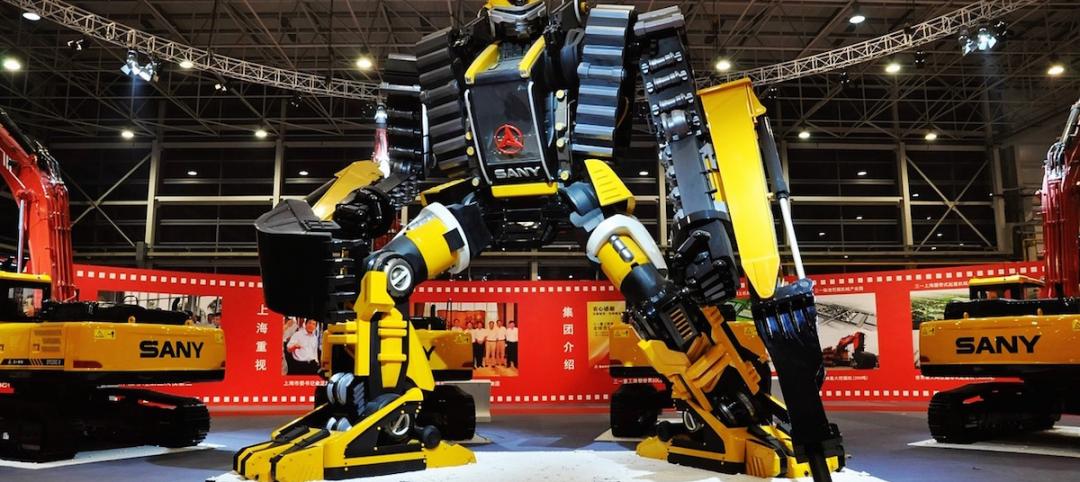As much as the AEC industry lauds technically audacious, grandiose green building projects, these one-off developments represent a drop in the bucket when it comes to shrinking the nation’s energy footprint. The real opportunity lies in the mundane world of small commercial buildings.
I’m talking about the gas stations, office buildings, schools, banks, daycare centers, grocery stores, auto repair shops, and retail malls that occupy every city, town, and neighborhood across the country. They’re not sexy, but collectively these buildings—defined as 25,000 sf or less—represent 88% of the commercial building stock in the U.S., and make up more than a third (36%) of the total square footage. When buildings up to 50,000 sf are taken into consideration (still considered “small” by the DOE), the numbers are even more dramatic: 94% of the commercial property stock and half the total square footage. This segment consumes 44% of the energy used in all buildings in the U.S. The smallest of the small (less than 10,000 sf) are the most energy-intense consumers on a per square foot basis, according to the Energy Information Administration.
In a report released this month, the National Institute of Building Sciences called this segment a “largely untapped source for significant energy savings.” NIBS estimated the retrofit market for small commercial buildings at $35.6 billion (assuming a 30% improvement in performance for buildings constructed before 1980).
The sector lags behind the larger property classes for a number of reasons. First, the shear number of building owners and managers, most of whom are small business owners, makes it difficult to coalesce the group around a single program or cause. Second, small buildings largely are an afterthought for the major green building rating programs, which tend to focus on structures greater than 50,000 sf.
Most important, according to the NIBS report, is the litany of market barriers that are preventing meaningful financing and investment in retrofits for this market. Obstacles include less-than-favorable credit scores among small building owners, underwriting difficulties for small property loans, a general lack of interest from institutional lenders and investors, and a severe knowledge gap among owners concerning energy upgrades and building operations.
In short, this segment is hardly low-hanging fruit, yet it is ripe for the taking. The NIBS report offers a roadmap for freeing up debt and equity financing for small-building energy retrofits. Among the NIBS recommendations:
- Encourage the development and testing of energy retrofit programs at the local level. Local initiatives are less risky than larger state, regional, and national programs, and can provide proof of concept for future initiatives.
- Require utilities to provide energy consumption data to property owners and tenants, along with information on energy retrofits and financing options.
- Push for public-private energy retrofit approaches in federal policy making. To date, public-private ventures have been the most successful funding model for retrofits, said NIBS.
- Expand federal programs, such as DOE, Energy Star, and EERE, to support state and local energy retrofit financing efforts.
For more: www.BDCnetwork.com/NIBSreport
More from Author
David Barista | Aug 15, 2019
3 ‘Giant’ AEC market trends for 2019-2020
We’re starting to see a shift toward custom research, thanks in part to the influx of data, data tools, and analytics expertise in the AEC market.
David Barista | Jul 31, 2019
Amenities war no more? Research report explores multifamily market
Multifamily developers show no signs of pulling back on specialty spaces and unique offerings in an effort to attract high-quality tenants, according to new research from Multifamily Design+Construction.
David Barista | Dec 30, 2016
An open letter to the AEC C-suite
Women AEC professionals need you to take action.
David Barista | Sep 6, 2016
Innovation intervention: How AEC firms are driving growth through R&D programs
AEC firms are taking a page from the tech industry, by infusing a deep commitment to innovation and disruption into their cultural DNA.
David Barista | Jun 27, 2016
If ‘only the paranoid survive,’ what does it take to thrive?
“Sooner or later, something fundamental in your business world will change.” The late Andrew Grove (1936-2016), Co-founder of tech giant Intel Corp., lived by these words.
David Barista | May 31, 2016
As commercial buildings get ‘smarter,’ concerns rise over cybercrime
As buildings become increasingly connected, opportunistic hackers have countless avenues into a building’s network.
David Barista | May 9, 2016
Is the nation’s grand tech boom really an innovation funk?
Despite popular belief, the country is not in a great age of technological and digital innovation, at least when compared to the last great innovation era (1870-1970).
David Barista | Mar 31, 2016
Deep Learning + AI: How machines are becoming master problem solvers
Besides revolutionary changes to the world’s workforce, artificial intelligence could have a profound impact on the built environment and the AEC industry.
David Barista | Feb 24, 2016
Is the booming freelance economy a threat to AEC firms?
By shifting the work (and revenue) to freelancers, “platform capitalism” startups have taken considerable market share from traditional businesses.
David Barista | Jan 26, 2016
How the Fourth Industrial Revolution will alter the globe’s workforce
The next great technological metamorphosis will be unlike anything humankind has experienced before, due to the sheer size, speed, and scope of disruption.
















